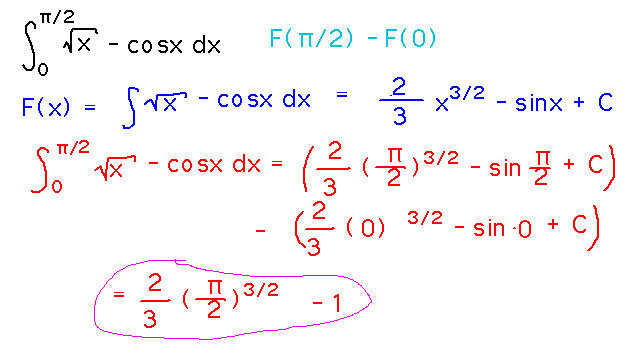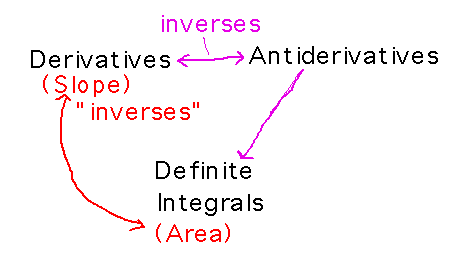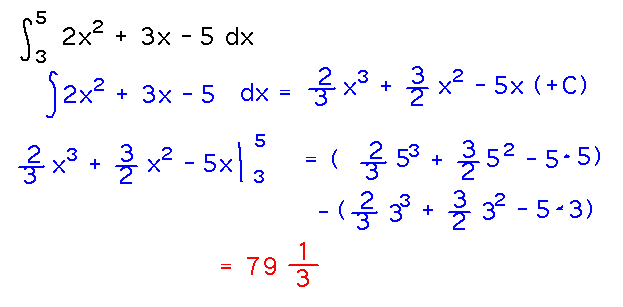Questions?
Question 4
How do you set up the “limits of Riemann sums” for question 4 on problem set 9?
Start by figuring out how the parts of the generic limit formula for a definite integral map to the specifics of this problem: what are the x values from which to calculate the heights of rectangles, what are the widths of the rectangles, what is the function f, etc.

Then rewrite the sum in those terms, find a closed form for it, and take the limit of the closed form.
The Fundamental Theorem, Part 2
Introduction
Find the integral of √x - cos(x) from x = 0 to x = π/2.
Reading ideas: To integrate f(x) from a to b, compute F(b) - F(a) where F is an antiderivative of f.
Solution:

Significance
Where does part 2 come from, i.e., what previous calculus ideas justify it?
Mainly the mean value theorem, providing just enough connection between derivatives and antiderivatives to connect a Riemann sum to a difference of antiderivatives.
What does the fundamental theorem (both parts) mean?
It establishes connections between the various areas of calculus.
And therefore a somewhat surprising connection between slopes and areas as being in some sense inverse issues

Definite Integrals
Integrate 2x2 + 3x - 5 from x = 3 to x = 5

Next
More applications of definite integrals.
Read section 5.4